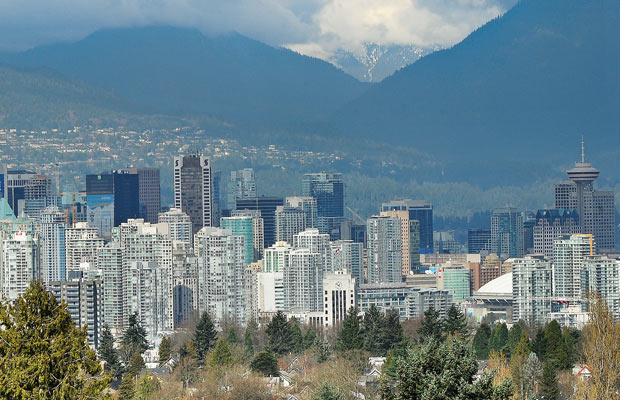Much debate results from a lack of data on how the underground economy and other factors influence housing prices
Don Cayo
Sun

What drives Vancouver’s house prices so relentlessly to levels four times higher than Winnipeg’s, and more than half again what Torontonians pay? Photograph by: Bill Keay, PNG
Criminals are people, too. As are immigrants, old folks and any other demographic group you can name.
And, yes, these folks all do their bit to drive up the cost of housing in Metro Vancouver.
Because the fact is, the more of us there are, no matter who or how we make our money, the more demand for homes. This, coupled with a housing supply that’s limited and skewed by our dramatic but difficult geography, pushes prices sky-high.
But do some of us drive up prices more than others?
Looking at a few specific neighbourhoods, the answer may very well be yes. But region-wide, not so much.
Vancouver‘s successive waves of wealthy immigrants, for example, no doubt bid up prices of upscale homes in the parts of the city that these newcomers see as choice.
Of course, the same could be said of poorer newcomers, who drive up the rents in basement apartments. After all, if they didn’t come here, or if they had more money, half our mortgage-helper suites would be empty and competition for tenants would drive prices down.
Beyond these obvious observations, however, the analysis gets complicated. There’s lots of speculation, but no data, on how much money organized (or, for that matter, unorganized) crime injects into the economy, how much spending power immigrants bring with them, or if or how much property flippers influence prices.
B.C.’s underground economy (shady cheats as well as gangland thugs) is likely north of 15 per cent of gross domestic product. This works out to more than — maybe a lot more than — $25 billion.
“Ultimately each drug dealer, each gangster, has to buy a Louis Vuitton bag for his girlfriend,” says Andy Yan, a planner and researcher at Bing Thom Architects. “The minute this happens, the grey economy hits the real economy.”
That’s a lot of money, “and no doubt it plays a role,” says Jock Finlayson of B.C. Business Council. “But is it an underlying explanation for the price of housing? I don’t think so.”
My colleague Kim Bolan specializes in crime, not real estate, but she agrees.
Bolan tells me top echelon gangs do invest in real estate and legitimate companies, but “if I think about all the gangsters arrested over the last two years, few had houses. Those who did usually just had one.”
Not surprising, perhaps, given that real estate deals attract the attention of the anti-money-laundering FINTRAC system, whereas luxury car purchases and pricey condo rents do not.
But, as with the unknowable amounts in savings and offshore earnings that immigrants bring into B.C., proceeds of crime clearly put a lot of money into circulation. And that can’t help but bolster demand beyond the limits suggested by the region’s fairly modest level of officially reported income.
Housing supply, apart from the geographical constraints dealt with in Saturday’s column, is further restricted by the generous amount of land set aside for parks and other public places, as well as the Agricultural Land Reserve, which becomes an ever-greater factor as housing sprawls farther into the suburbs.
Supply is further choked by the tendency, supported by tax breaks from every level of government, for senior couples or individuals to stay as long as they can in the large homes where they raised families.
Tsur Somerville, an economist who specializes in real estate at UBC’s Sauder School of Business, notes that it’s hard to say if this will be a bigger or a smaller market factor in the future. On one hand, there’s a growing tendency for seniors to sell their big homes and invest the money in condos, which may cost as much but which occupy a lot less land. On the other hand, every year there are more and more seniors, and they’re living longer.
Real estate consultant Paul Sullivan of Burgess Cawley Sullivan and Associates notes that even when seniors do sell out, and even when these homes are modest, they often aren’t an option for most young buyers, especially in upscale areas.
“Where the one-level, 1,200-square-foot bungalow used to sell for $400,000,” he says, “it’s been pushed to $800,000, $1 million or $1.2 million as a development site.
“A developer can build a new home for $500,000 or $600,000 and sell it for $1.8 million. So if you want an entry-level home, you’re competing with a developer who wants to buy the same house and tear it down.”
© Copyright (c) The Vancouver Sun

